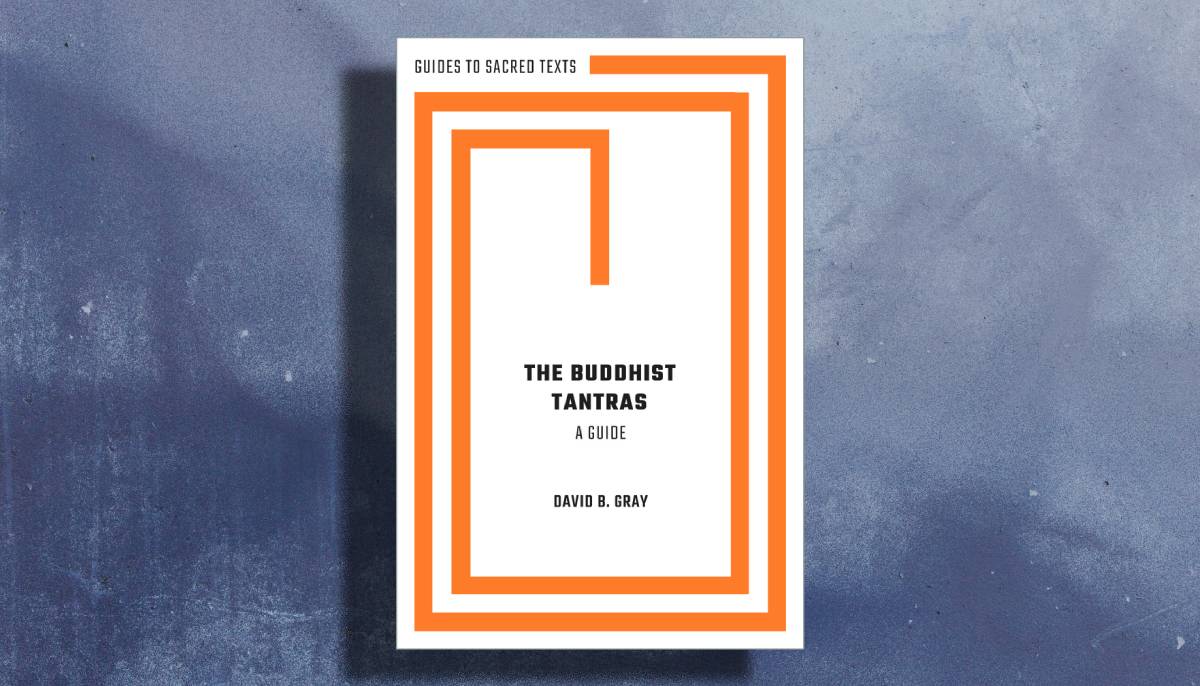This excerpt from The Buddhist Tantras: A Guide by David B. Gray— as reviewed in the Winter 2023 issue of Buddhadharma: The Practitioner’s Guide — is provided courtesy of the publisher, Oxford University Press. We thank Oxford for sharing this with Buddhadharma’s readers, and we thank our readers for supporting dharma publishers.
 The Buddhist tantras are one of the least understood bodies of scripture— with good reason: they are deliberately obscure to maintain the secrecy that traditionally surrounds the teachings and practices of tantric Buddhist traditions. Tantric Buddhist traditions are conceived as a distinct path to awakening, the goal of Buddhist traditions, and it is usually termed either the “adamantine path” (vajrayāna) or the “mantric path” (mantrayāna), the latter highlighting a key feature, that is, mantras, or sacred formulas, which are recited in tantric ritual and contemplative practices. While they are part of the larger “Greater Path” Mahāyāna Buddhist tradition, the Buddhist tantric traditions are, more accurately, offshoots of this larger tradition. They accept the basic premises of Mahāyāna Buddhism but claim to possess secret teachings that enable awakening in as short as one lifetime.
The Buddhist tantras are one of the least understood bodies of scripture— with good reason: they are deliberately obscure to maintain the secrecy that traditionally surrounds the teachings and practices of tantric Buddhist traditions. Tantric Buddhist traditions are conceived as a distinct path to awakening, the goal of Buddhist traditions, and it is usually termed either the “adamantine path” (vajrayāna) or the “mantric path” (mantrayāna), the latter highlighting a key feature, that is, mantras, or sacred formulas, which are recited in tantric ritual and contemplative practices. While they are part of the larger “Greater Path” Mahāyāna Buddhist tradition, the Buddhist tantric traditions are, more accurately, offshoots of this larger tradition. They accept the basic premises of Mahāyāna Buddhism but claim to possess secret teachings that enable awakening in as short as one lifetime.
This volume will attempt to introduce this genre to interested readers, and it presupposes no prior understanding of Buddhism. As a result, the volume will use the English language whenever possible, translating and explaining Buddhist titles and technical terms when they are first introduced, excepting only those Buddhist terms that have entered English and are generally well understood, such as buddha, mantra, karma, and so forth. To best introduce the tantras, many passages from tantric scriptures and commentaries will be included and translated into English in the clearest manner possible. On rare occasions Buddhist terms from other languages, such as a Sanskrit, are used, due to the ambiguity of their meaning in context, but the reason for this and the possible range of the term’s meanings will be explained.
The first chapter of the volume begins by defining terms, indicating what is meant by terms like “tantra” and “tantric Buddhist traditions.” It then moves on to introducing them, focusing on their emergence in India during the seventh century CE. The chapter traces two main sources for the development of these traditions. One, the gradual development of traditions of magic and ritual practice in Buddhist traditions, and, two, the tantric traditions that appear to have emerged first among the Śaivas, namely, the Hindus who take the god Śiva to be the supreme creator god. Following this historical overview, the chapter explores the two main types of origin myths for the Buddhist tantras and looks closely at the narratives produced by Buddhists from the seventh century to explain the emergence of the tantras.
The second chapter provides an overview of the contents of the Buddhist tantras. It begins with the background verse that traditionally opens Buddhist scriptures, which relate the contexts in which the texts are taught. These opening passages establish that the work is the speech of an awakened one, the traditional Buddhist understanding of scripture. As this entails a lineage claim, the importance of lineage in tantric Buddhist traditions are also introduced. The chapter also covers the language and style of the tantras, as well as overviews their contents, which are typically ritual and contemplative practices, focusing on the mandala, the circle of awakened beings that features prominently in tantric practices as well as art, iconography, and architecture. The chapter concludes with a brief look at tantric ritual magic.
The third chapter summarizes the dissemination of tantric Buddhist traditions, via maritime routes to Southeast Asia and China, and thence to Korea and Japan, as well as overland from India and Nepal to Tibet and eventually the ethnic Mongolian regions of Central Asia. The chapter argues that tantric Buddhist ritual and magical practices were a major appeal that facilitated their transmission in Asia. The chapter concludes with a look at tantric Buddhism in the contemporary world. It summarizes the travails to which tantric Buddhists were subjected in Tibet and Mongolia, under communist rule in China and the Soviet Union, as well as the global spread of tantric Buddhism from the 1960s onward, facilitated by the diaspora of Tibetan and Mongolian lamas.
The fourth chapter looks closely at tantric literature. It introduces the different genres of tantric literature, including different types of tantras as well as commentaries and ritual texts and meditation manuals. It surveys attempts to classify the tantras and to distinguish them from exoteric Buddhist works, which were developed in India, Tibet, and East Asia. It then relates the attempts to develop canons of tantric literature and how these canons were organized.
The final chapter addresses the unmistakable “red thread” that runs throughout the rest of the chapters, which is the presence of transgressive rhetoric in the tantras, particularly the description of sexual and violent rituals.1 This is a notable feature of the tantras from their first appearance in the seventh century, and it became more prominent over time. This was a serious issue since Buddhist identity was traditionally defined in terms of nonviolence, and spiritual authority was associated with monastic celibacy. The chapter explores how transgressive content affected the reception of the tantras. It compares their translation in the Tibetan and Chinese contexts, and it argues that it affected how they were received, which led both to efforts to block the transmission and translation of tantras, as well as influenced the translation style, with transgressive passages far more likely to be creatively translated to mitigate the impact of this content. It explores the sophisticated exegetical strategies that Buddhist commentators developed to explain this content. In conclusion, it suggests that transgressive rhetoric in the tantras may have had the effect of challenging Buddhist constructions of identity to facilitate the transformation in self- identification that is required for success in tantric Buddhist contemplative practices. If so, this represents a very risky strategy, given the challenges this rhetoric posed to the dissemination and survival of these texts and associated practice traditions.
While this volume makes a tiny contribution toward our understanding of what is a vast and complicated body of thousands of works, it will hopefully give the reader with no prior study of Buddhist tantras a solid understanding that can serve as the basis for further study if so desired. Those who have studied them may find that the broad range of topics covered and texts translated will open their eyes to aspects of these traditions they were previously unaware of. Hopefully it will inspire further study of the fascinating array of religious literature, most of which remains unstudied and untranslated in Western- language contexts.
Since this volume is oriented toward readers interested in Buddhist tantras but without specialized training in their study, as mentioned, English translation will be used as much as possible. For technical terms, the equivalent in the original language will also be given in parentheses when first used. The titles of tantric works will also be given in English translation, with their title in the original language also given in parentheses when first introduced. Sanskrit terms will be given in roman transliteration with diacritics, except for terms that have entered the English language, hence “mandala” and “sutra” rather than “maṇḍala” and “sūtra.” The only exception is when relating the names of Sanskrit texts; in this case, diacritics are provided for all terms in the title. Tibetan terms will be given using Wylie transliteration. Chinese characters are used for the sake of clarity.
This article includes excerpts from The Buddhist Tantras: A Guide by David B. Gray and published by Oxford University Press © David B. Gray 2023. Used by permission. All rights reserved.
For more on the latest dharma books, read this issue’s edition of Buddhadharma on Books. Or see more excerpts and other digital exclusives for Buddhadharma readers here.

